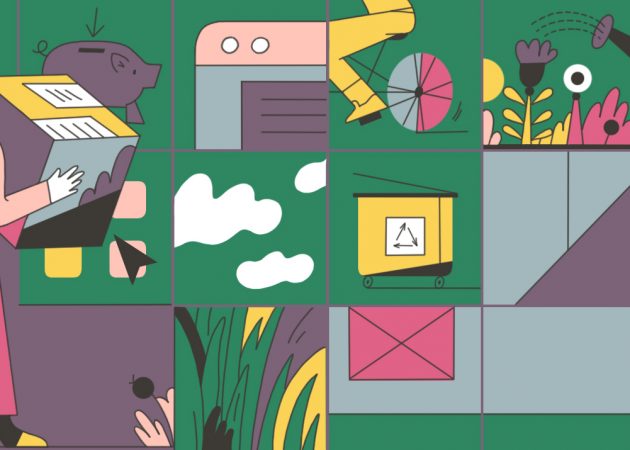
Companies like yours fail to think long-term
Contents
Contents
The semantics of long-term thinking
I purposedly didn’t use the term “sustainability” to pitch this article. The problem with talking about sustainability, especially in a headline format, is that we all have our subjective experiences with the term. Many take it to mean ecological and environmental sustainability per default, without entertaining the idea of its more holistic possibilities. Sustainability as a word carries nothing intrinsic in the way of ecology specifically, and so for the purposes of this article, I want to take a step back and think of the word from two additional perspectives: mind and society.
With that introduction out of the way, have a gander at the originally intended title: “Companies like yours fail to be sustainable”. Does it mean the same to you now as it would have, just moments ago? Hopefully not.
I will take you through my personal perspective, experience, and advice on buying software development as a solution, in three steps:
1. Why our preconceptions about the word “sustainable” miss the mark
2. How a stereotypical buyer thinks
3. How you need to reframe your development needs
Why our preconceptions about the word “sustainable” miss the mark
The word “sustainable” should make any business pragmatic worth their name roll their eyes by now. For the past decade, the term has been hijacked by greenwashers and environmentalists with passion points and agendas far from the concrete needs of your business. And by all rights, you should be tired of any repeated mantra that doesn’t, by evidence, grow your business or align with your mission.
Looking at the evolution of the Ukrainian IT industry, it was possible to discern today’s trends already 10 or 20 years ago. The increasing commoditization of software development has been leading to a mass production revolution in software. But instead of sacrificing high-quality materials and craftsmanship for volume and streamlined production pipelines, we have been sacrificing team longevity and the ripple effects of quality software engineering. And that is the sustainability we should be talking about.
If we continue to talk about sustainability solely as a green topic, we lose the bandwidth to tackle other facets of sustainability that are immensely important.
How a stereotypical buyer thinks
Our sales team talks to dozens or hundreds of potential clients every week. Perhaps you are one of them. Many of these clients zone in on a shortlist of questions:
- Can you do this software thing for us?
- How much does it cost?
- Can I have it tomorrow?
The answers are usually: yes, it depends, and no. These questions are cornerstones of business interaction for a reason, and should probably continue to be. But if these questions were all that truly mattered, and implied success, then we would all rely on anonymous software development marketplaces by now. There is no need for a complex team assembly idea if all it boils down to is quantifiable in the very first step of logical abstraction.
There’s a reason we don’t work like that today. The fact is that different ways of working generate different results, even for providers and development teams that seem superficially identical when scrutinized by the same three questions.
What buyers, especially when they don’t have a long-term vision for their company, may fail to address are parameters that impact the overall ROI just as much – in the long run.
- What are the motivations of all the people involved?
- Will the same tech specialists stay with the project until the end? Why? How?
- Will the code and processes be maintainable?
- Will the development team contribute to the compound value of my business, or will it become a solemn branch that can rot/be sawed off at a moment’s notice?
How you need to reframe your development needs
As a buyer, you need to revisit the core questions you ask your shortlist of provider candidates. Remove focus from the limited scope of now, and make sure to encapsulate a broader picture. You have nothing to lose by doing this. A provider will not deliver a worse product short-term simply because they are structured in a way that promotes longevity and sustainability. To the contrary, I would say that reducing long-term risk creates positive synergy from day one.
Add the following parameters to your future RFPs:
- Mental health – how do we work to engage, challenge, and care for developers to ensure that we don’t churn team members every 6 months or when a better-paid opportunity comes along?
- Society – business is not a zero-sum game, so how do we create value in the world around us, so that we can create wealth together? Or even more tangibly, how do we create ripple effects in our team members’ lives, creating happier, better individuals?
- Environment – inevitably, transforming how we interact with the durable resources of the world changes the way we think about the durable resources of a business. How do we create a better relationship between teams, development efforts, and the world around us?
The classical public relations concept of “CSV” (Creating Shared Value) has never been more real than now. Yet, many decision-makers on the buying side of software development rely on the best practices of yesterday rather than those of today. I believe that—today—the opportunity to generate surplus value by incorporating broad-spectrum sustainability factors at the outset of a project is at a level where it makes sense both financially and ethically.
Don’t miss out.
Subscribe to blog updates
Get the best new articles in your inbox. Get the lastest content first.
Recent articles from our magazine
Contact Us
Find out how we can help extend your tech team for sustainable growth.






